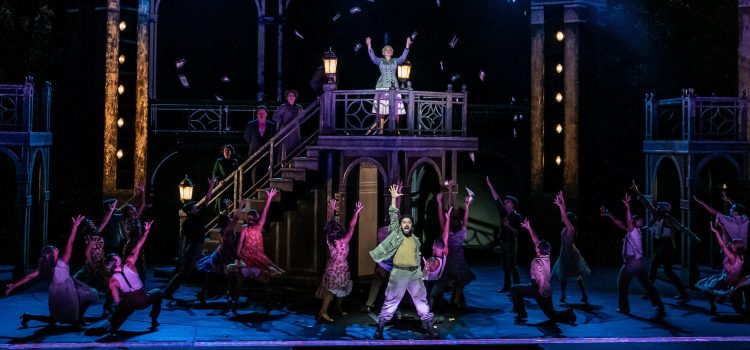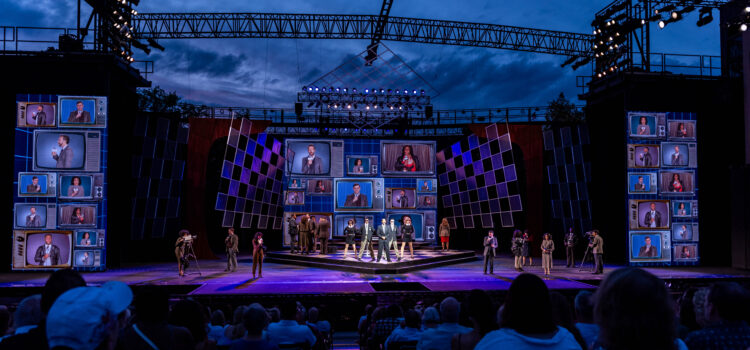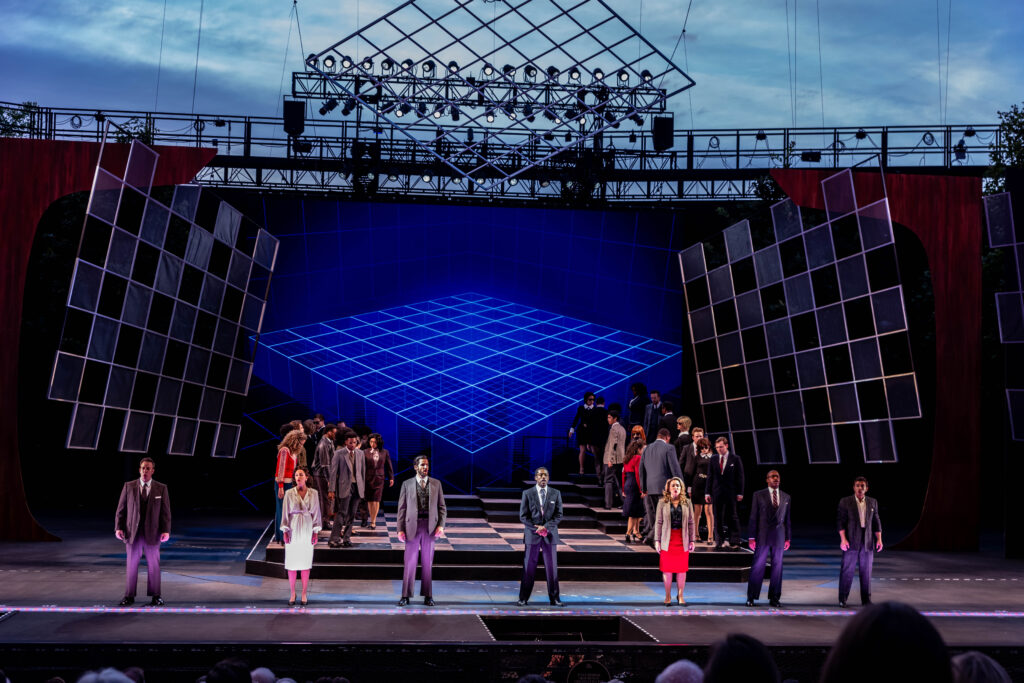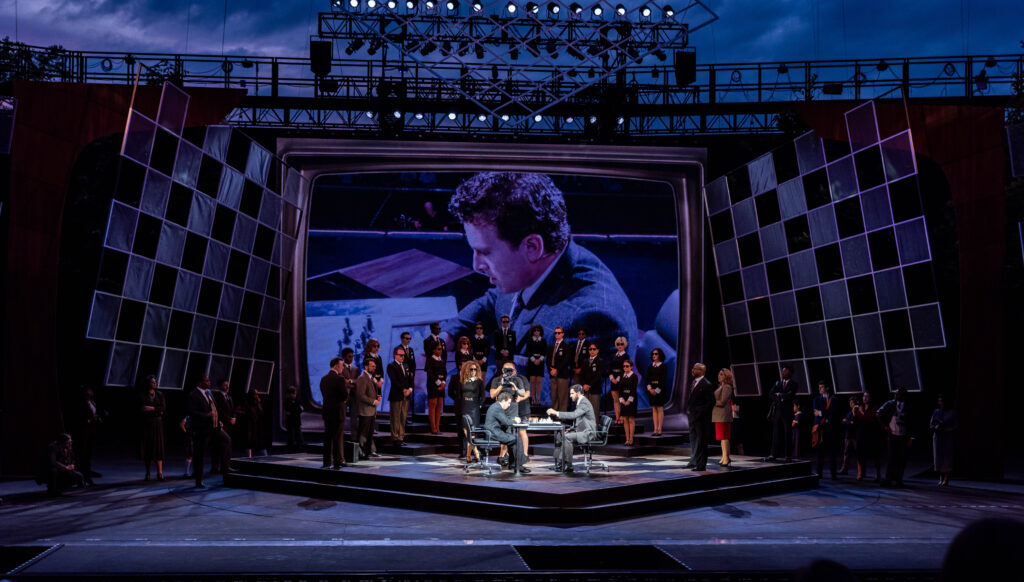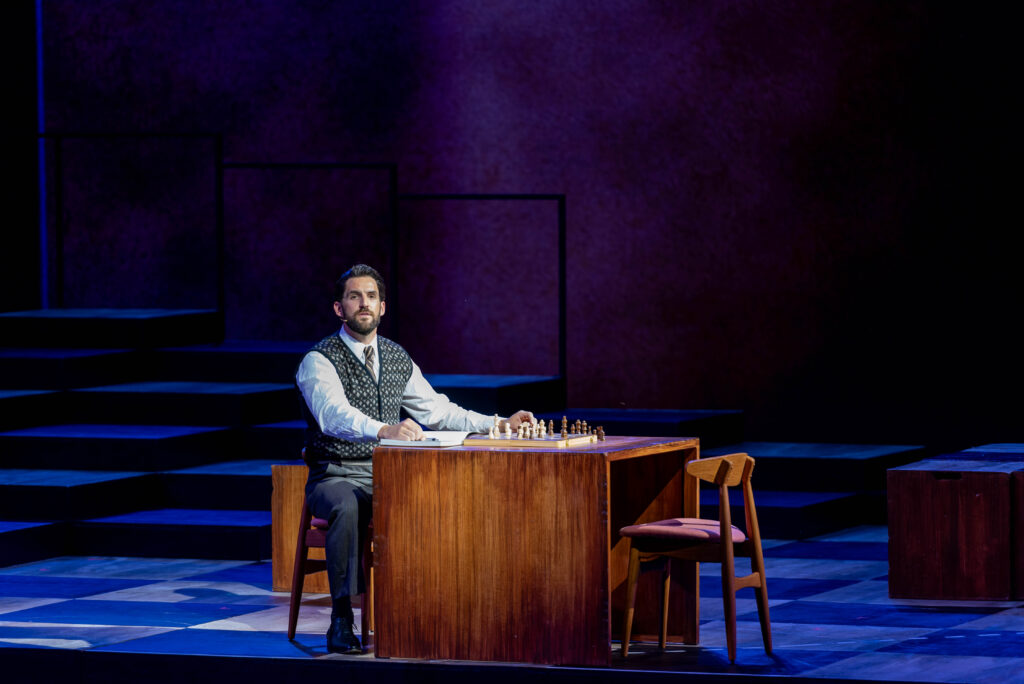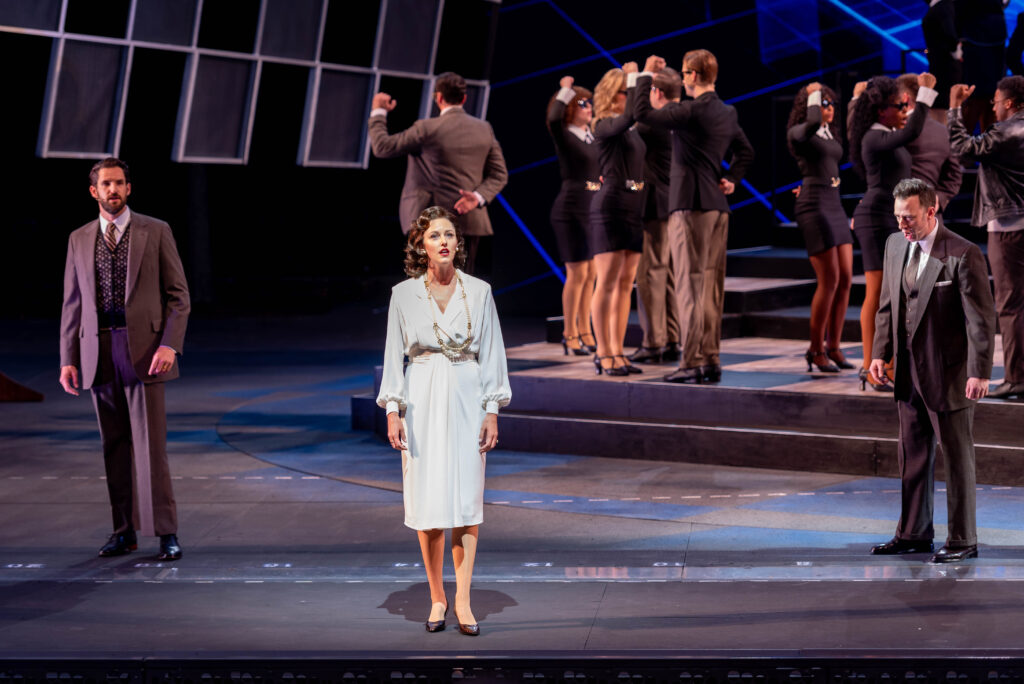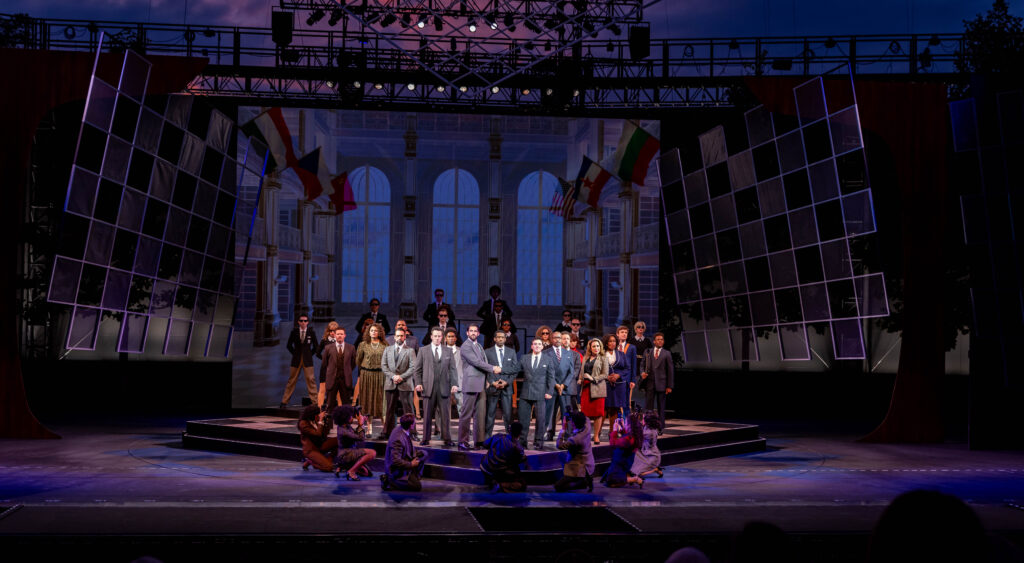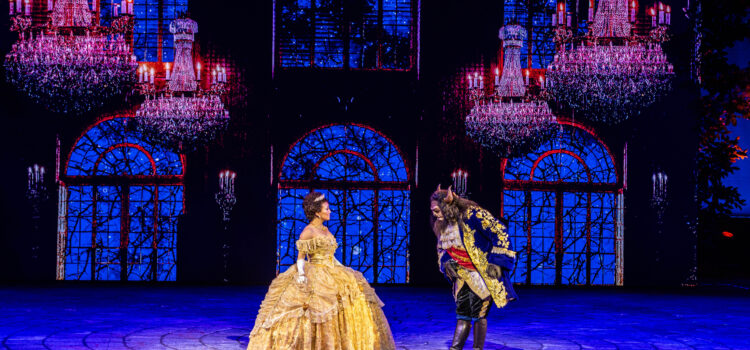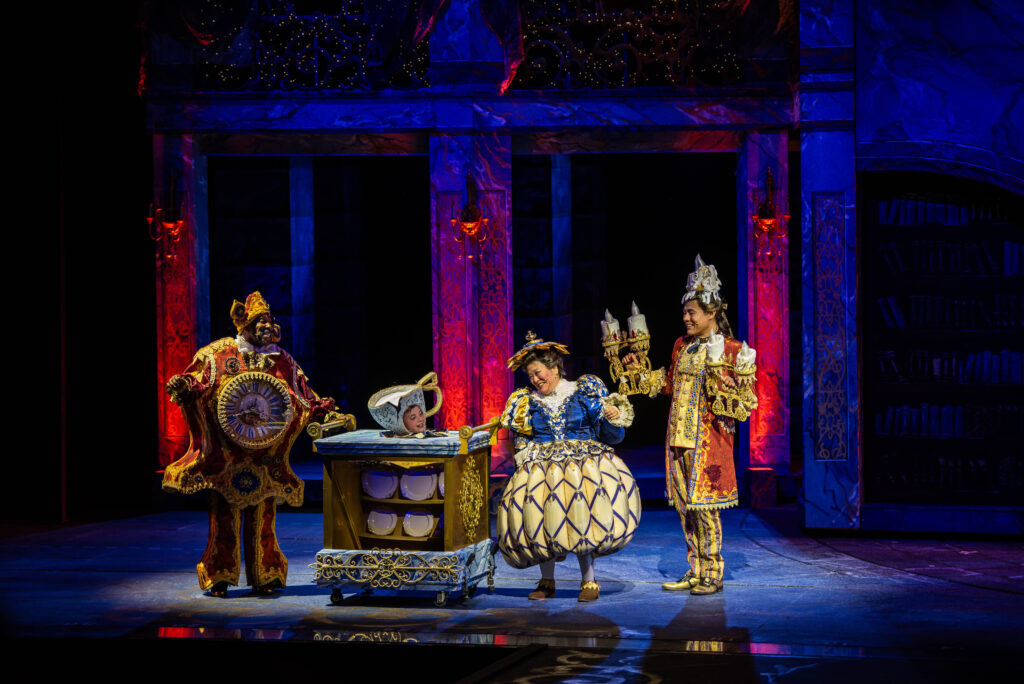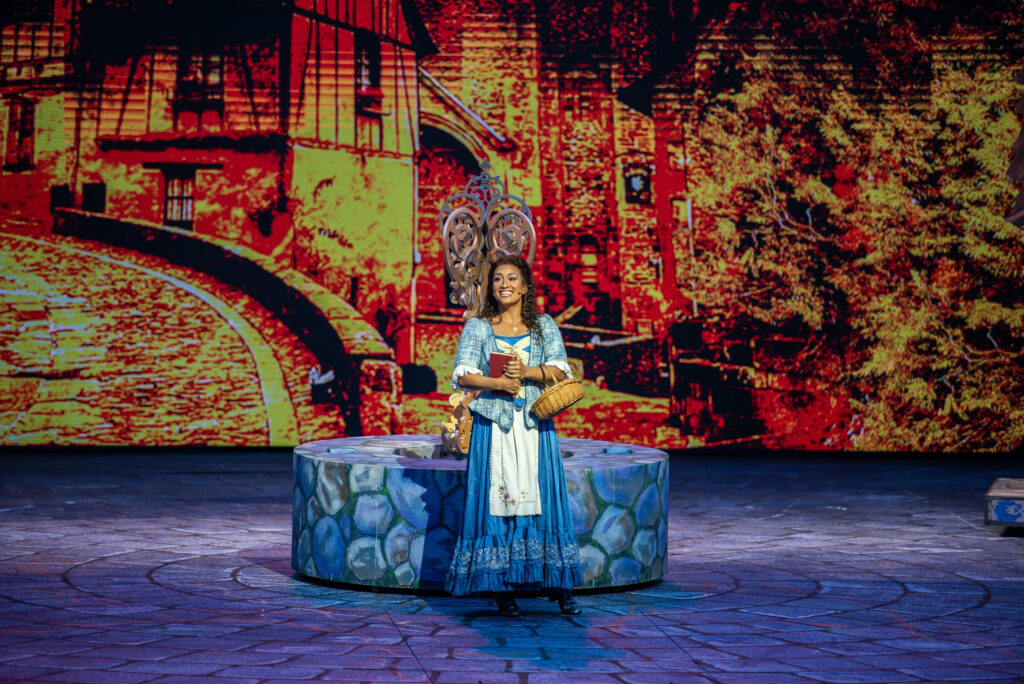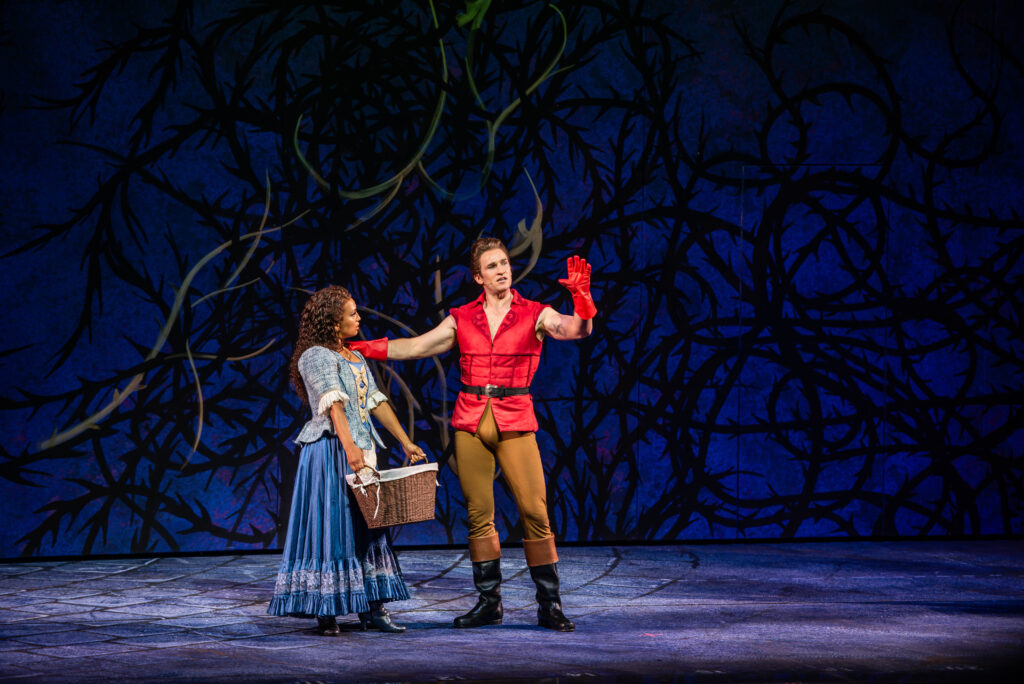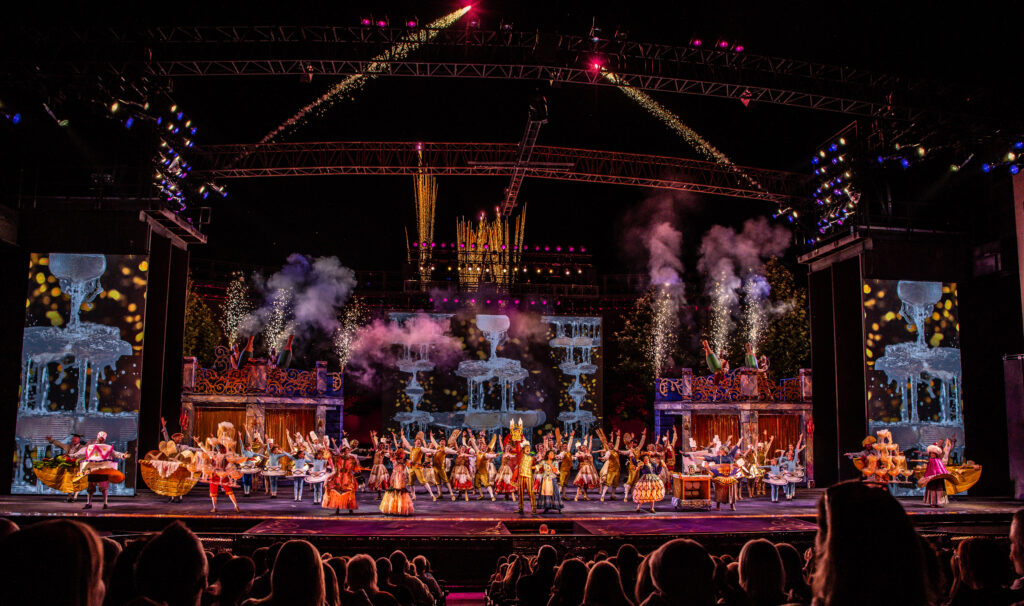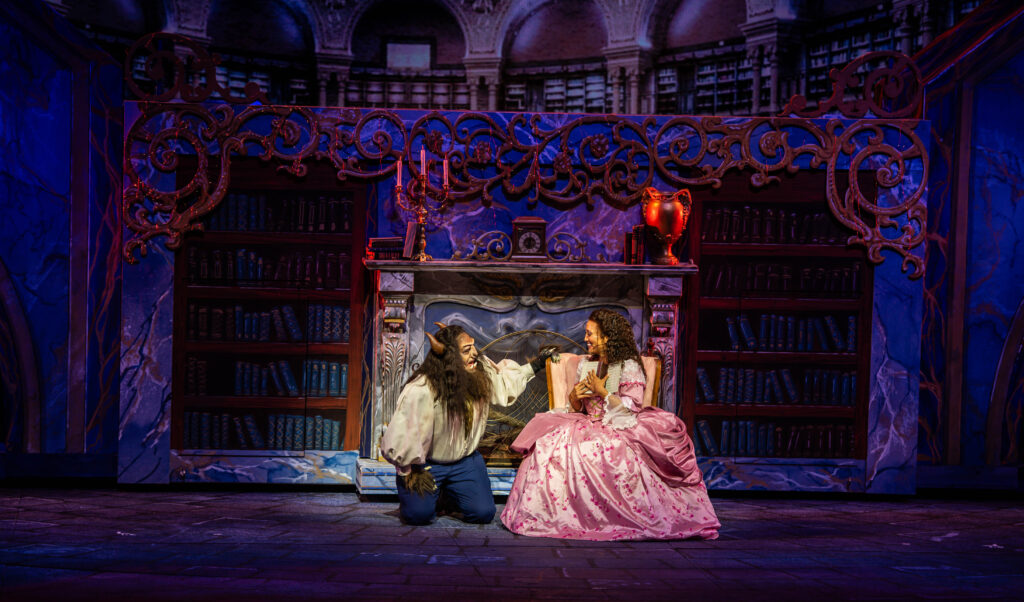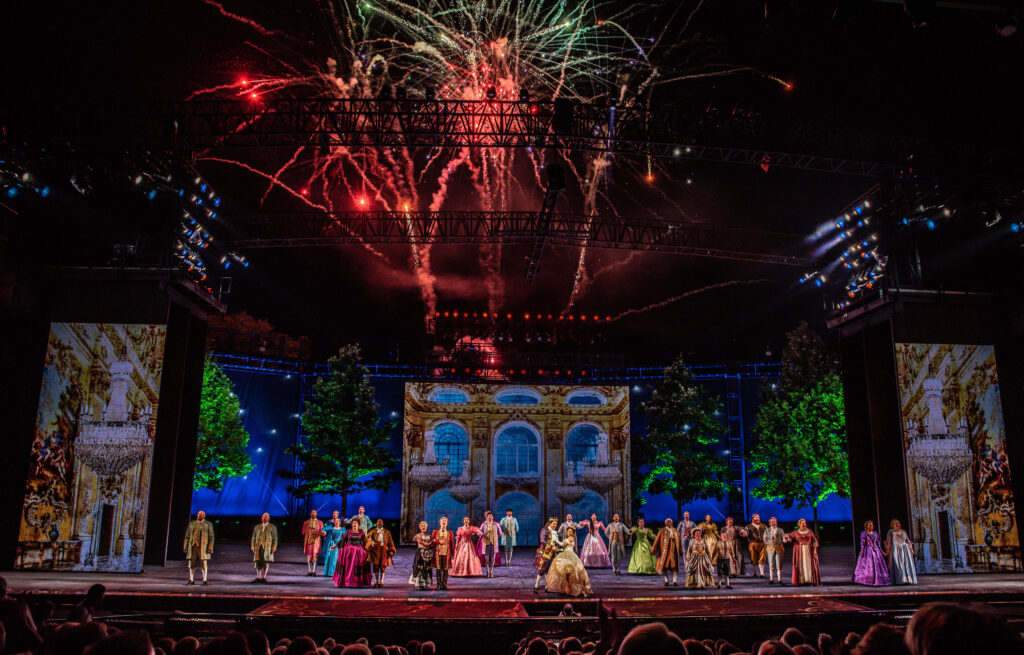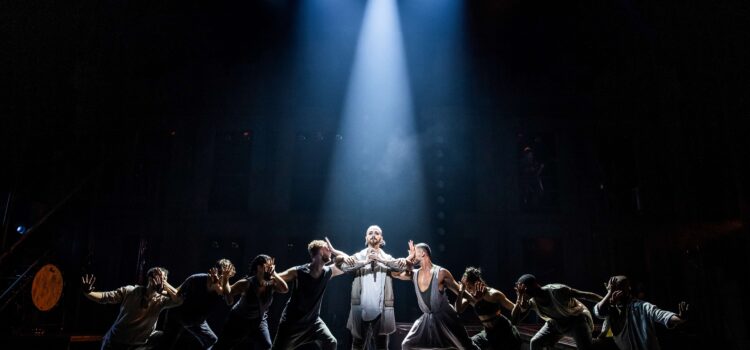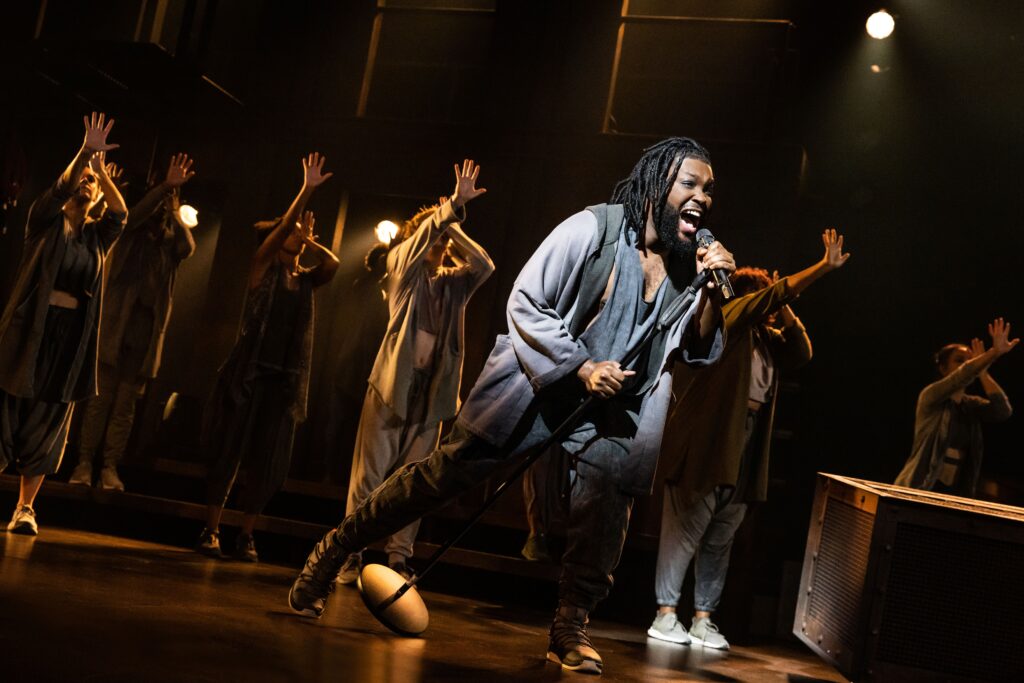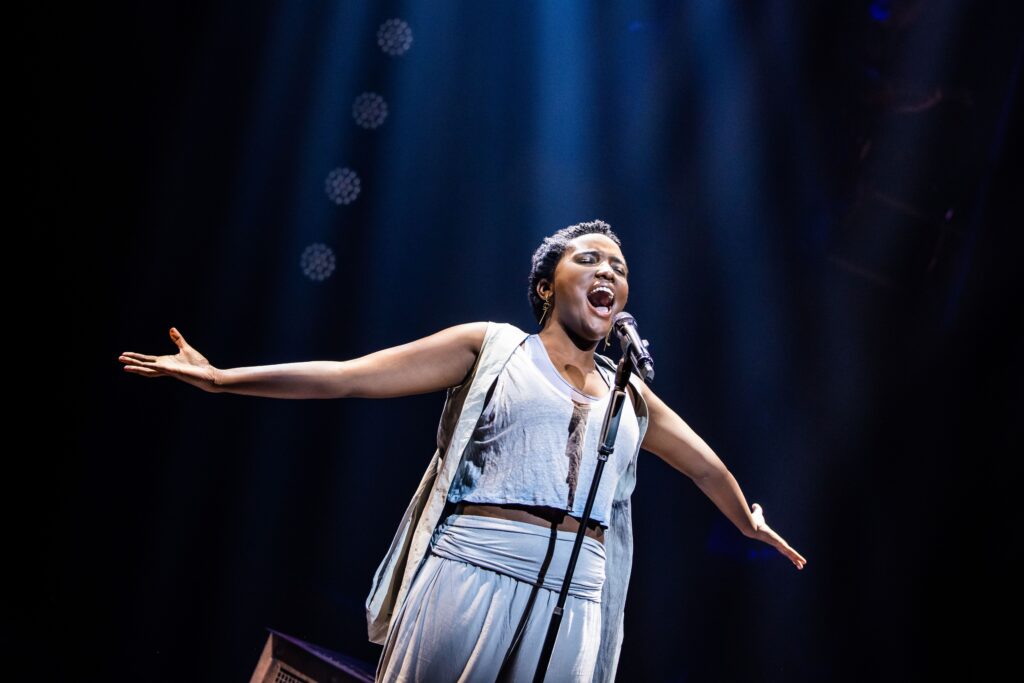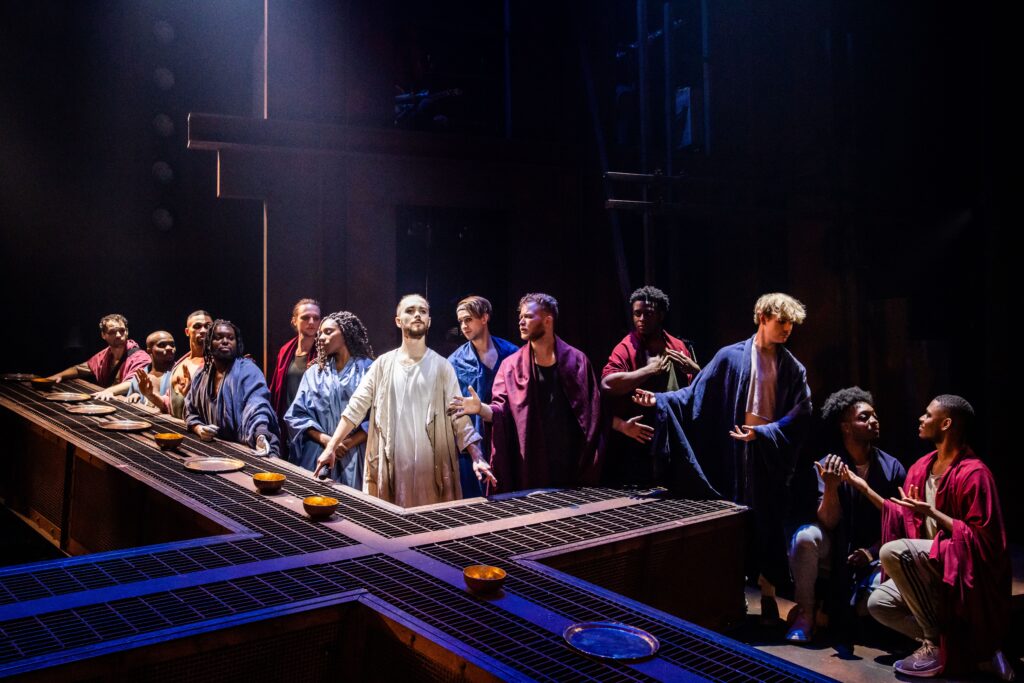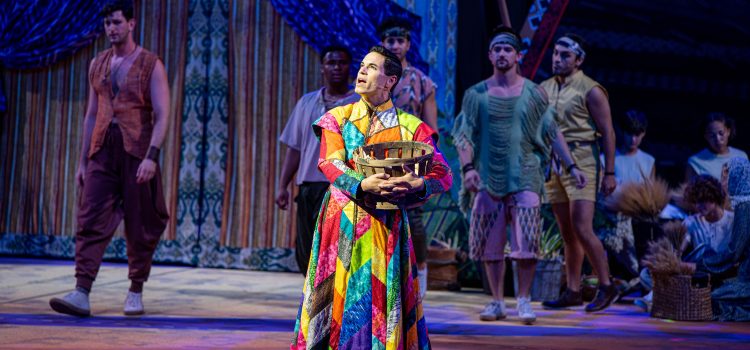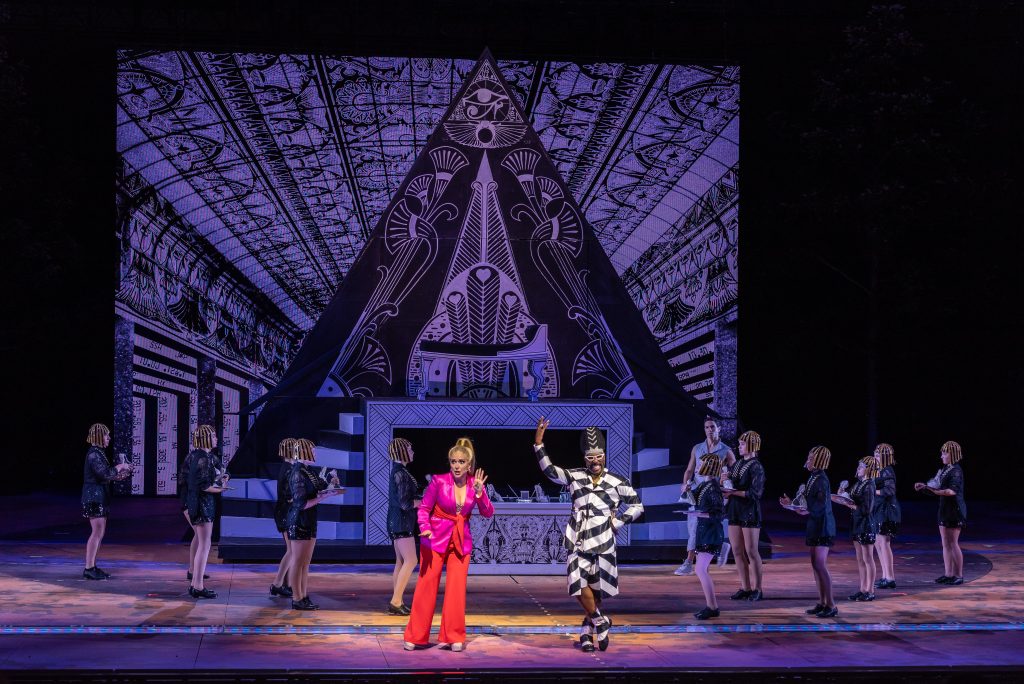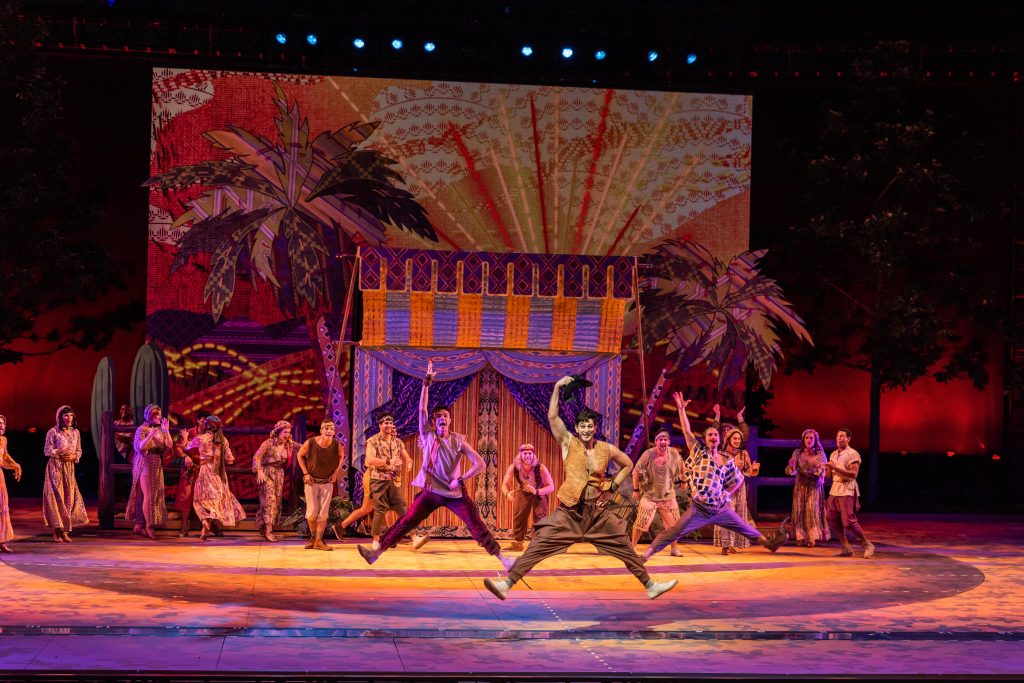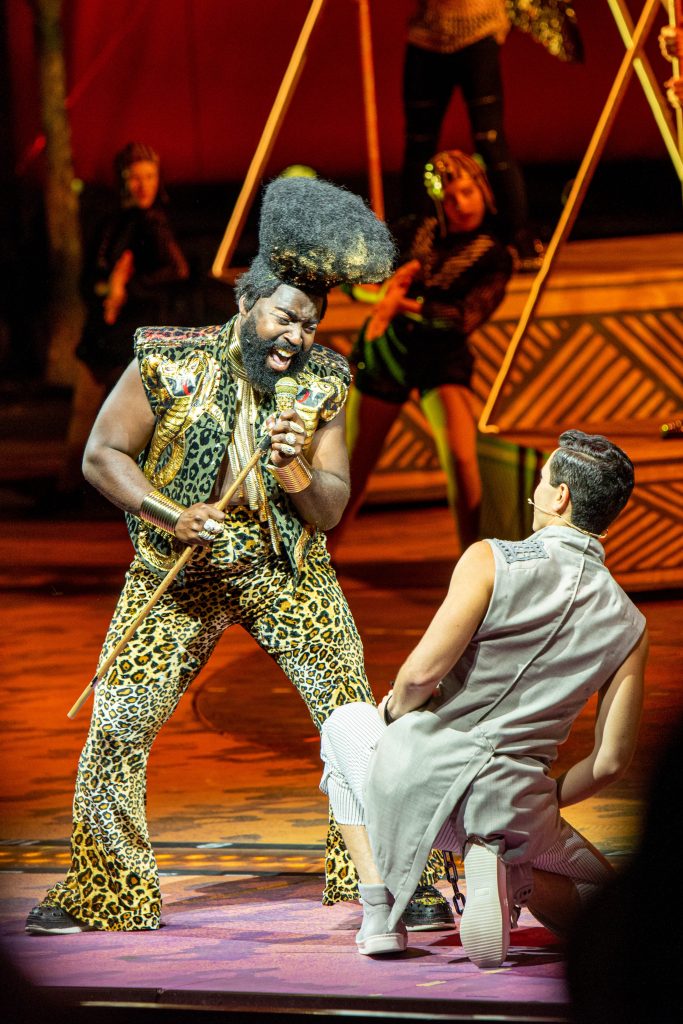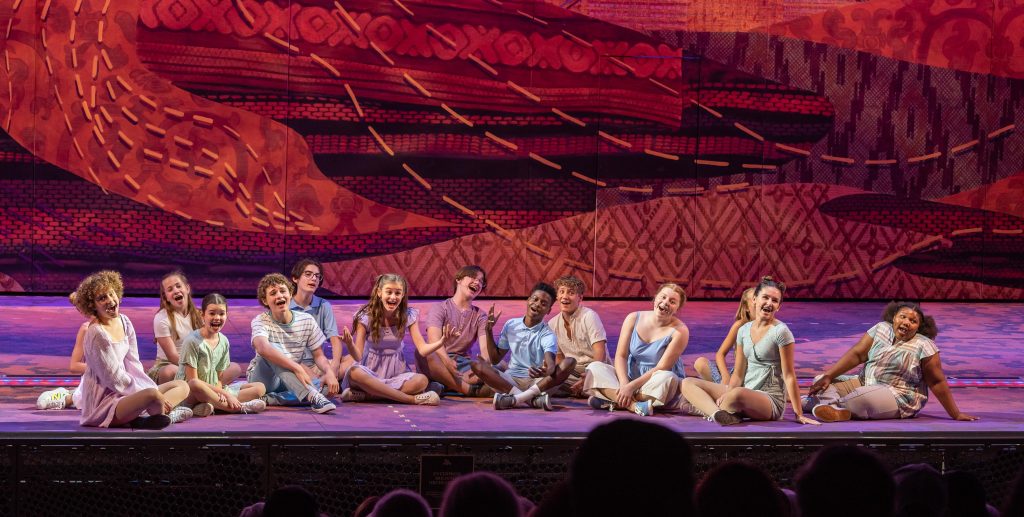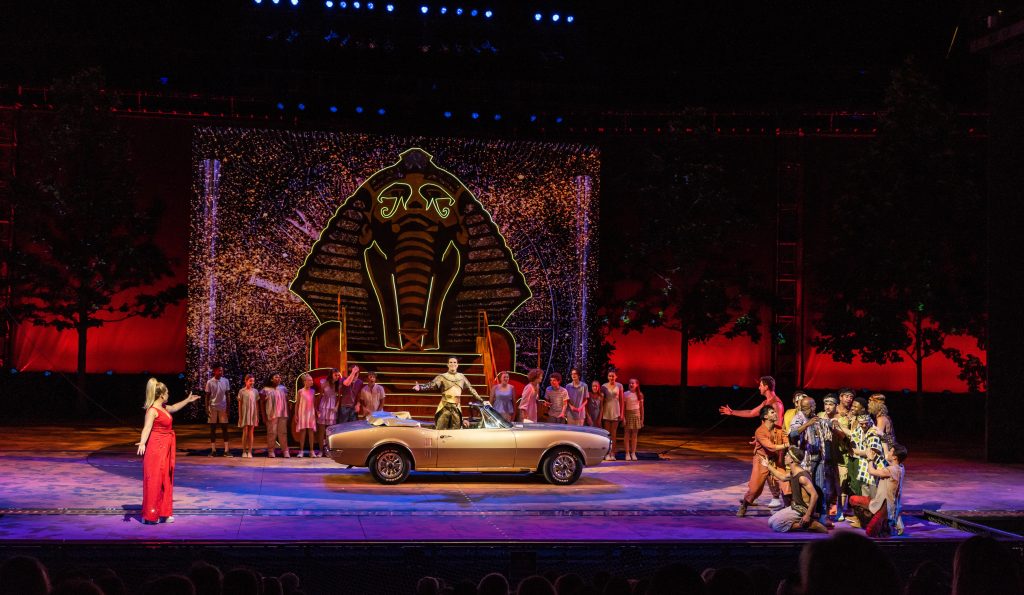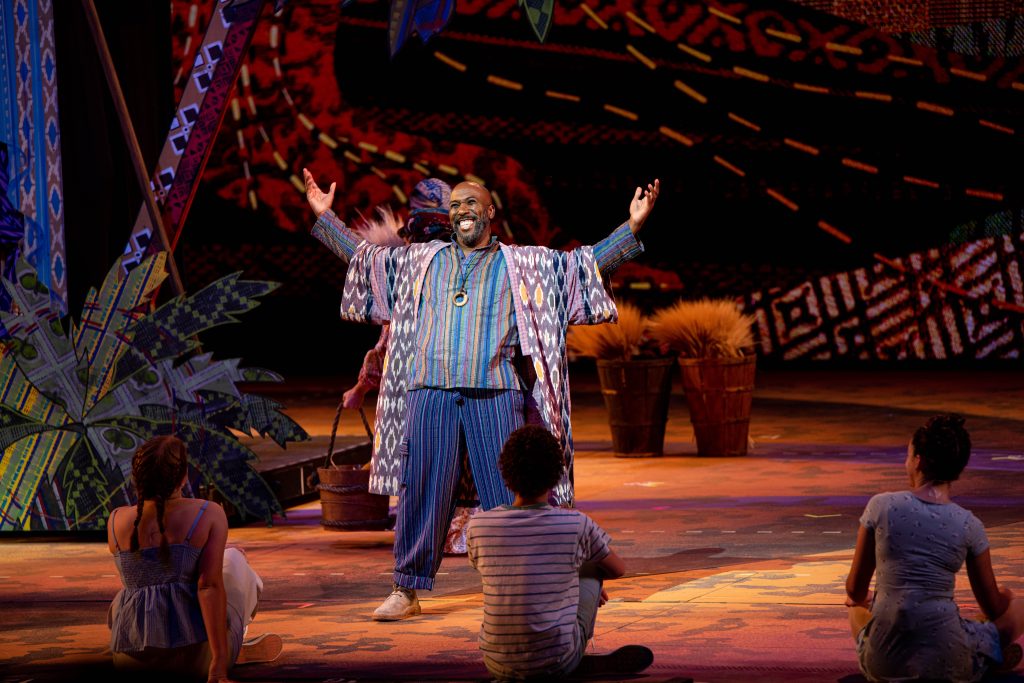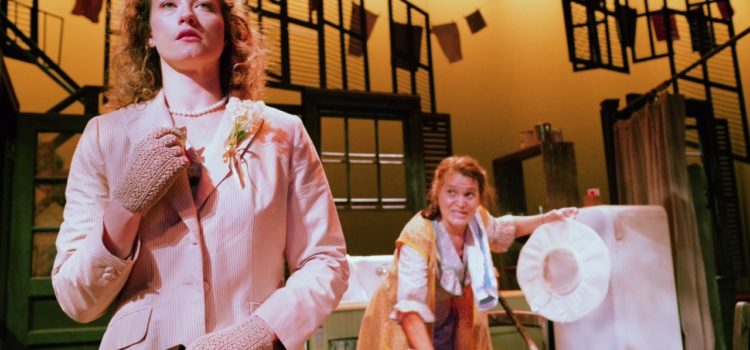By Lynn Venhaus
Virtuoso vocals and transfixing tangos propel the Muny’s grand-scale stylized and dramatic “Evita,” the Andrew Lloyd Webber and Tim Rice classic.
Featuring three of the most expressive voices to grace the outdoor stage this or any season, Katerina McCrimmon is the titular character, Paulo Szot is Argentinian president Juan Peron and Omar Lopez-Cepero is narrator Che, the historic revolutionary born in Argentina. The musical goes through her meteoric rise to power and influence as Argentina’s First Lady.
Through their stunning renditions of the signature songs, the trio earns the audience’s awe and admiration. Notable for their commanding stage presence, technical skills and strong delivery, they flourish in the imposing setting.
Also standing out were tenor Daniel Torres as the charming Magaldi in “On This Night of a Thousand Stars,” and mezzo-soprano Sabrina Santana poignant as Peron’s mistress, whose heart-tugging “Another Suitcase in Another Hall” is one of the evening’s highlights.
The glamourous and charismatic Evita, who died tragically of cervical cancer at age 33 in 1952, grew from humble beginnings to beloved icon. Marrying Peron in 1945, she became a populist leader after his election in 1946, later described as the “Spiritual Leader of the Nation.”
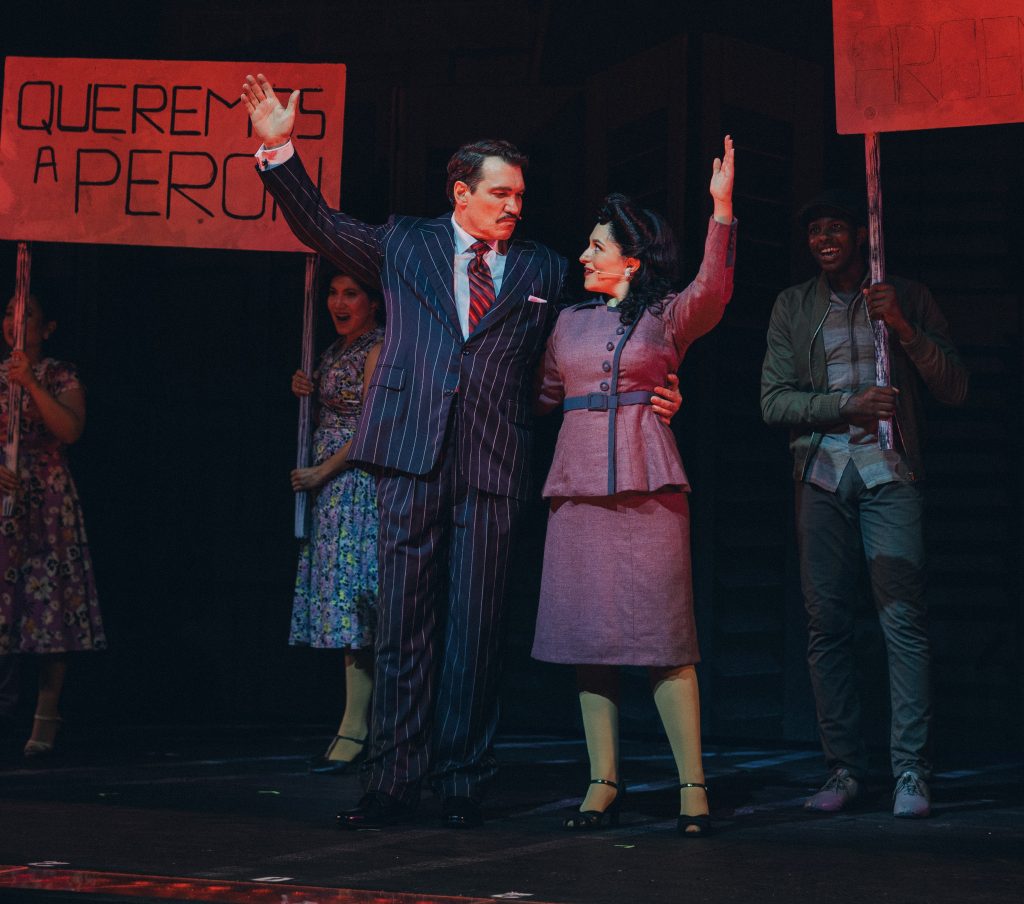
The story starts in 1934 when the poor Maria Eva Duarte was 15. As Evita, she championed the rights of the working class, women and the poor, establishing social programs and instrumental in women’s suffrage. But she also had her detractors, not accepted by the aristocracy.
McCrimmon, who is skilled at bringing the house down, for she toured as Fanny Brice in the most recent revival of “Funny Girl” and her rendition of “Don’t Rain on My Parade” was a highlight of the Fox 2024-2025 Broadway season.
With her tour-de-force delivery, she creates a magical Muny moment with the showstopper “Don’t Cry for Me Argentina.” Image-wise, she’s breathtaking in a shimmering flouncy white ballgown with silver sparkles, standing poised on a stately balcony/staircase representing Casa Rosada, the government seat.
With customary finesse, the Muny’s execution is nearly flawless. Innovative director Josh Rhodes, who also choreographed, had a specific vision and meticulously followed through, collaborating with the associate director and choreographer Lee Wilkins. Natalia Nieves-Melchor is the assistant choreographer and dance captain.
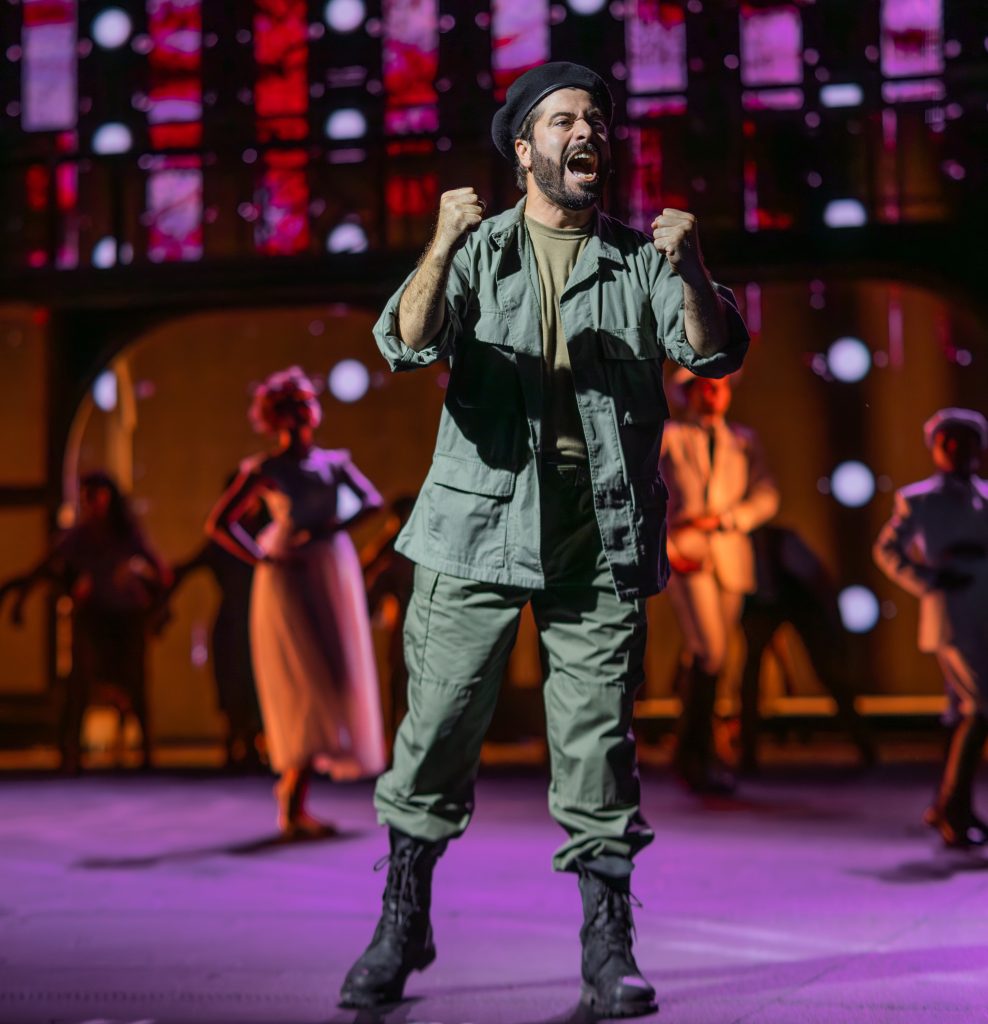
Rhodes’ flair for incorporating novel ideas was evident in “Chess” two years ago, and now, this time.
McCrimmon and Szot are a good match together, first paired in “I’d Be Surprisingly Good for You.” Tony winner as Emile de Becque in Bartlett Sher’s acclaimed 2008 revival of “South Pacific,” his rich, warm baritone is powerful in “The Art of the Possible,” “A New Argentina,” and shows range in the tender “She Is a Diamond.”
A bona fide star in three previous Muny shows, Omar Lopez-Cepero is an exceptional Che. As a cynical commentator, he snarls, he scowls, he expresses his disdain for Evita’s opportunistic and manipulative ways. And his songs are just as passionate.
He’s an observer, Greek chorus, challenger and critic on stage most of the time. Lopez-Cepero’s intensity comes through singing “Oh What a Circus,” “High Flying Adored,” “The Chorus Girl Hasn’t Learned,” “The Money Kept Rolling In” and “Dice Are Rolling,” among others.

Lopez-Cepero was memorable in “On Your Feet!”, “The Unsinkable Molly Brown” and “Paint Your Wagon” in recent years, and he owns this role, making his performance unforgettable.
Best of all is music director Ben Whiteley’s brilliant orchestrations and conducting. He has brought out vivid colors in the musical imagery through captivating use of instrumentations.
He exuberantly captures Latin rhythms, jazz influences and pop melodies in the anthemic score.
Each orchestra piece stands out, thanks to the top-shelf skills of the 24-piece orchestra. Their work is exquisite from “A Town Square in Buenos Aires” through 26 more compositions to the finale “Lament.”
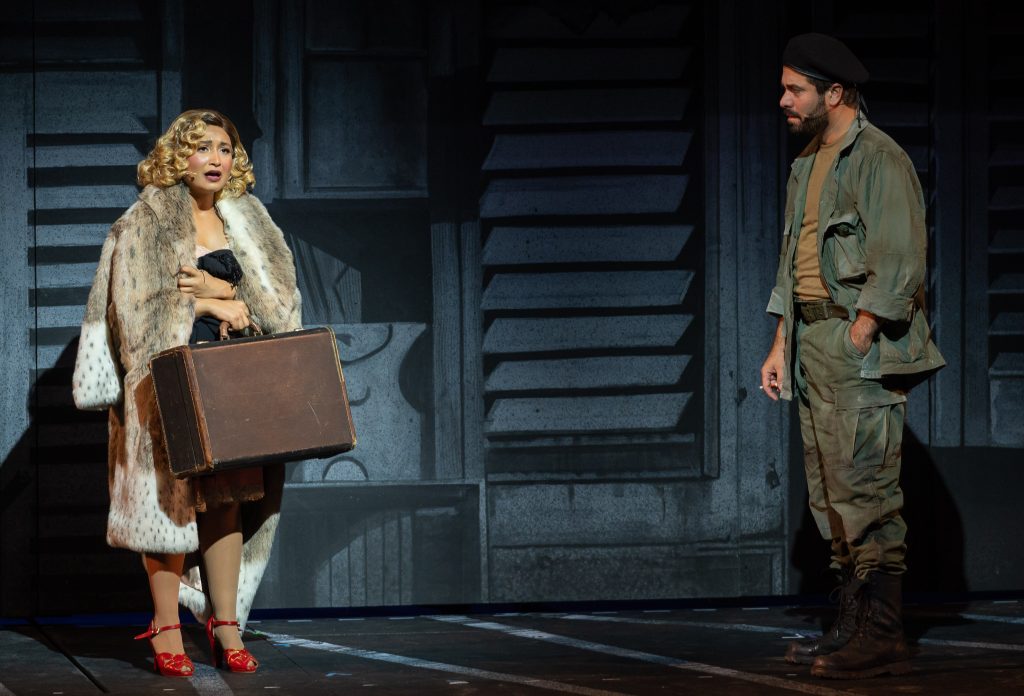
Sound designers David Patridge and John Shivers also enhanced the aural experience.
Adam Koch’s majestic scenic design, accompanied by Paige Seber’s moody lighting design, and Steven Royal’s distinct black-and-white video design, all Muny debuts, create an immersive regal tableau. Fun fact: 20 years ago, Koch was a young assistant stage designer at the Muny. Welcome back!
One of the most eye-catching elements is world-class tango dancers Junior Cervila and Noelia Guerrero – you can’t take your eyes off them. Cervila choreographed the tango-infused numbers.
They are mesmerizing in their first act introduction, then “Waltz for Eva and Che,” the finale, and most beautifully presented in the bittersweet ballad “You Must Love Me.”
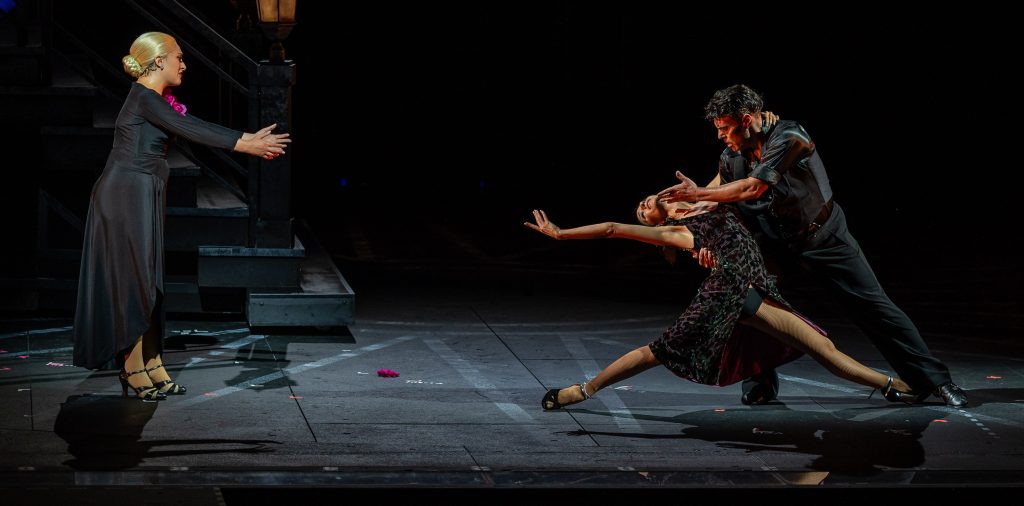
Written by Webber and Rice for the 1996 film adaptation, it not only became a stand-alone hit for Madonna, but also won Best Original Song at the 1997 Academy Awards. It has since been incorporated into the show.
“Rainbow High,” where McCrimmon directs her transformation so that she can be adored and their ‘savior,’ ramping up the “star quality,” is also impressive, as is a feisty, playful “Buenos Aires.”
An articulate 20-person ensemble, representing different social classes, becomes a community, and their movements represent a changing cultural landscape – Rhodes’ vibrant choreography spotlights the country’s sociopolitical changes.
Andrés Acosta, Leyla Ali, Marissa Barragán, Leah Berry, Patrick Blindauer, Jordan Casanova, Marilyn Caserta, Junior Cervila, Devin Cortez, Nicholas Cunha, Kyle de la Cruz Laing, Daniel Alan DiPinto, Kylie Edwards, Noelia Guerrero, Natalia Nieves-Melchor, Zibby Nolting, Arnie Rodriguez, Leann Schuering, Trevor Michael Schmidt, Sharrod Williams and Noah Van Ess are featured – in celebration and in mourning. An ensemble of ten Muny Kids and eight Muny Teens are also incorporated. Shout-out to stage manager Kelsey Tippins.
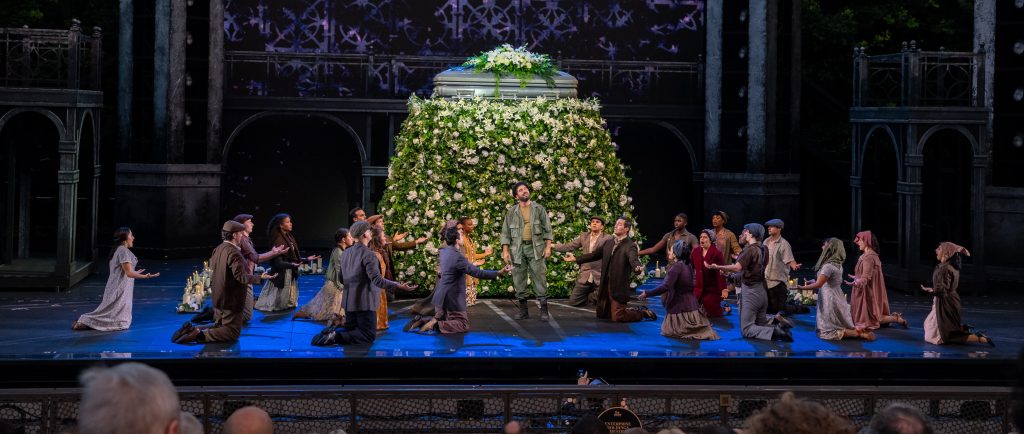
First-time costume designer Brian Hemesath brings considerable show business credentials with him – Three-time Emmy winner for “Sesame Street,” 100 digital shorts for The Lonely Island on SNL 2002-2015 and work on Spielberg’s “West Side Story” and John Wick films.
His timeline for Evita’s evolution from peasant to model, radio star, actress and First Lady is a mix of flashy and classy. Wig designer Kelley Jordan’s work is exemplary, complimenting his various looks.
The alluring presentation is not the issue. Webber and Rice’s storytelling is the show’s weakest aspect. Partly because throughout time, Eva has become a historical footnote, and many are not familiar with her controversial story.
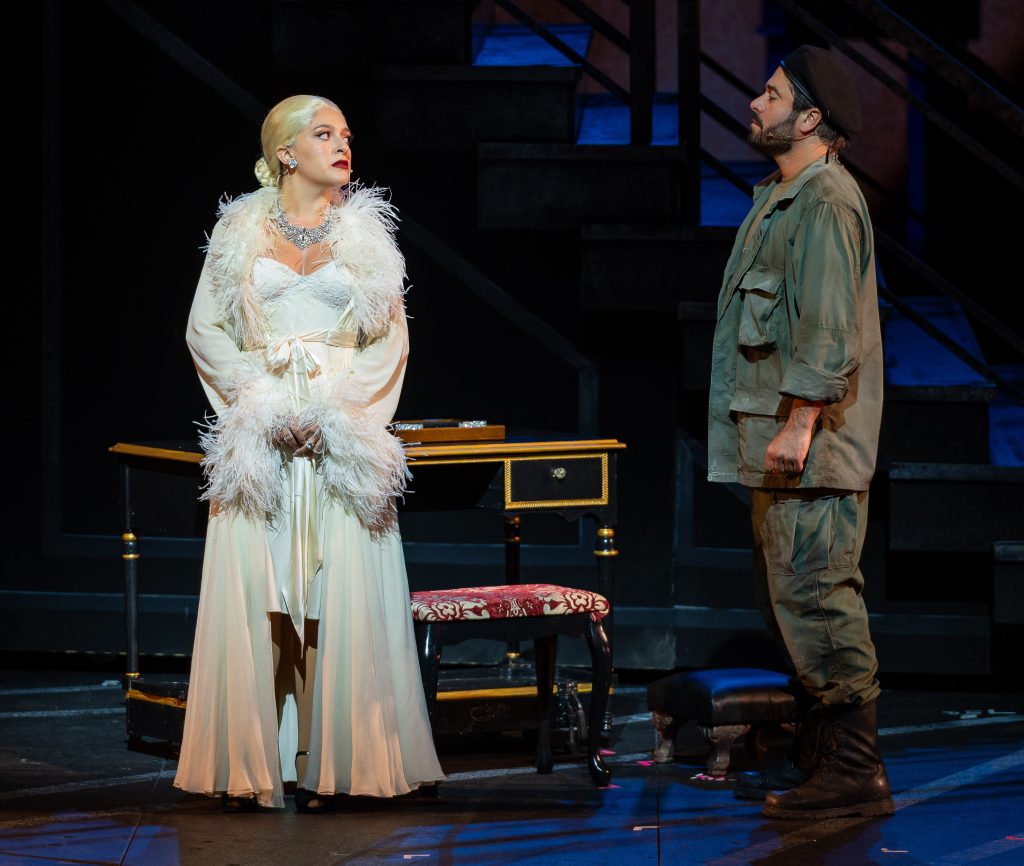
Is she a heroine or a villainess? It’s up to you to decide, but the musical’s format is hampered by unsympathetic viewpoints. You also may need a tutorial before you go, if you are unaware of the backstory.
This is not to say that the cast isn’t impassioned, because they are, and are fully committed to giving their all. They try very hard to make it an inspirational touchstone.
I’ve always found this musical cold – even though I invariably admire the performers. After seeing a national tour at the Fox Theatre in 2015 and an equal parts gritty and elegant presentation at the Repertory Theatre of St. Louis in 2018, I’m still waiting for the show to give me a reason to care.

Nevertheless, the Muny’s creative teams’ craftsmen and artists have premiered one of the most dazzling productions with precision and clarity. Rhodes and company are authentic in historical context.
(Full disclosure, outside of “Jesus Christ Superstar,” not the biggest fan of Webber-Rice’s main claims to fame. I feel they are more about spectacle and bombast than an emotional investment. I hope for something to move the needle but so far not yet. So, there is that.)
Their ambitious and very theatrical sung-through musical “Evita” became a sensation first in London in 1978, starting with a rock opera concept, transferring to Broadway a year later and becoming the first British musical to win the Tony in 1979.
It made stars of its leads, Patti LuPone and Mandy Patinkin, who won Tony Awards (show nominated for 11, won 7).
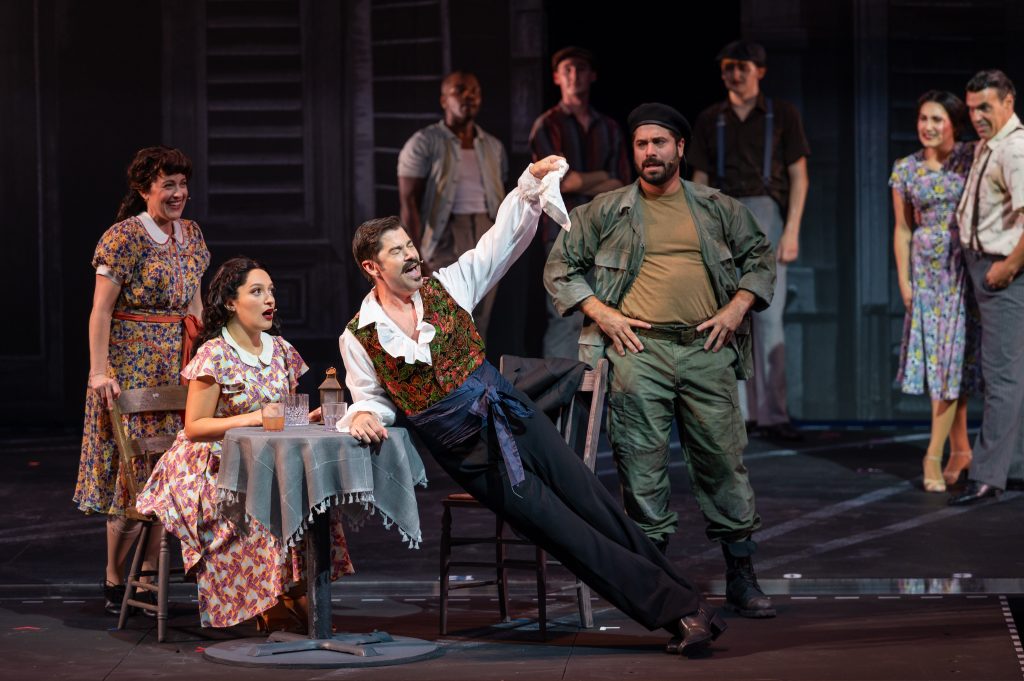
A 1996 movie starred Madonna and Antonio Banderas, and a 2012 Broadway revival starred Ricky Martin. London’s West End has revived the musical five times, including a current Jamie Lloyd interpretation starring Rachel Zegler.
The Muny debuted the show in 1985, and reprised it in 1989, 1996 and 2001. So, it’s been 24 years since a fresh take.
With its superlative all-around singers and their polished stage presence, “Evita” is a stylish whirl of dance and recognizable musical numbers.
The Muny presents “Evita” July 18 -24 at 8:15 p.m. nightly at the outdoor stage in Forest Park, 1 Theatre Drive.The musical is 2 hours, 20 minutes with an intermission. For more information, visit www.muny.org
.
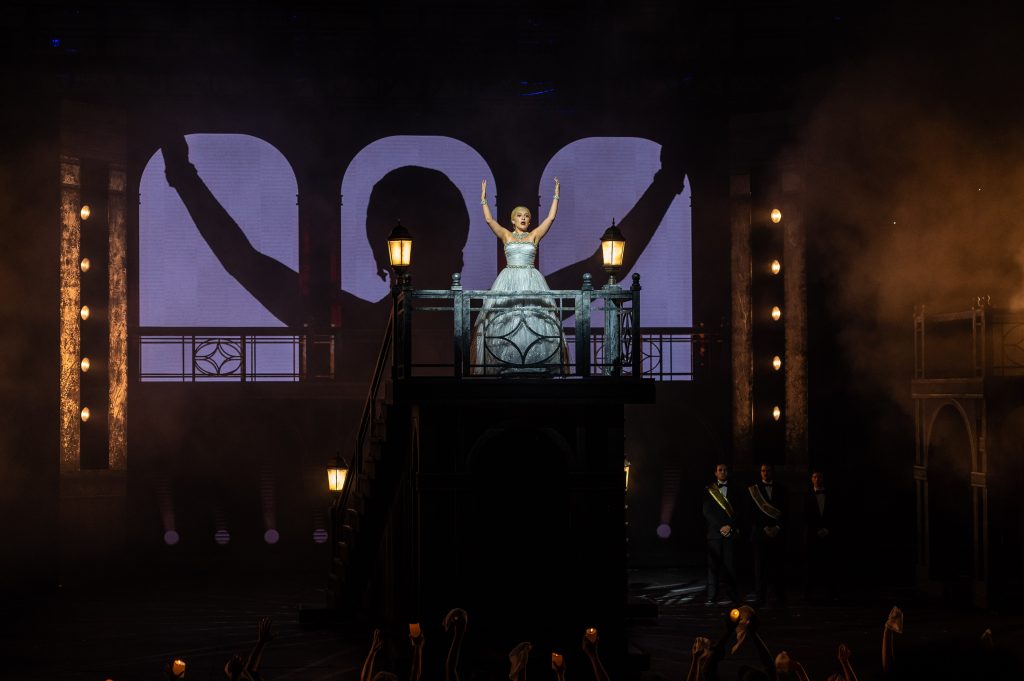

Lynn (Zipfel) Venhaus has had a continuous byline in St. Louis metro region publications since 1978. She writes features and news for Belleville News-Democrat and contributes to St. Louis magazine and other publications.
She is a Rotten Tomatoes-approved film critic, currently reviews films for Webster-Kirkwood Times and KTRS Radio, covers entertainment for PopLifeSTL.com and co-hosts podcast PopLifeSTL.com…Presents.
She is a member of Critics Choice Association, where she serves on the women’s and marketing committees; Alliance of Women Film Journalists; and on the board of the St. Louis Film Critics Association. She is a founding and board member of the St. Louis Theater Circle.
She is retired from teaching journalism/media as an adjunct college instructor.

